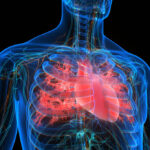- Home
- Who We Are
- Shop
- Products
- GlycoCheck
- The Science
- Study: Improving Aortic Aging with Endocalyx Pro
- Improve Vascular Health with This Supplement
- Promising Supplement for Kidney Health
- Inositol & Insulin Resistance
- PEMF Therapy Benefits
- Maximizing Mediterranean Diet Benefits
- Glycocalyx (eGC): What is Endothelial Glycocalyx?
- 9 Tips for a Healthy Aging Lifestyle
- More Science….
- News & Events
- Join
- Login

Effects of high-intensity interval training on microvascular glycocalyx and associated microRNAs
Abstract
High-intensity interval training (HIIT) has been proposed to exert vasculoprotective effects. This study aimed to evaluate whether HIIT affects the microvasculature, including the endothelial glycocalyx barrier, and to identify associated microRNAs (miRNAs). Fifty healthy participants (23.1 ± 3.0 yr) performed a 4-wk 4 × 30-s all-out running HIIT. Sidestream dark-field imaging was performed at baseline and follow-up to detect changes of the sublingual microvasculature including the endothelial glycocalyx. Exercise parameters were determined by continuous running field test and documentation of high-intensity runs. miRNAs potentially associated with glycocalyx thickness were selected by structured literature search and blood samples for miRNA, and lactate measurements were drawn at baseline and follow-up HIIT. At baseline, a correlation between maximal exercise performance capacity and glycocalyx thickness (determined by perfused boundary region) was detected (P = 0.045, r = 0.303). Increased exercise performance at follow-up also correlated with glycocalyx thickness (P = 0.031, r = 0.416), and increased high-intensity sprinting speed was associated with an increased number of perfused vessels (P = 0.0129, r = 0.449). Literature search identified miR-143, -96-5p, and -24, which were upregulated by HIIT already at baseline and showed an association with peak blood lactate levels after sprints (all P < 0.05). Moreover, increased baseline miR-143 levels predicted increased glycocalyx thickness at follow-up (AUCmiR-143 = 0.92, 95% confidence interval, 0.81–1.0, P = 0.0008). Elevated resting miR-126 levels after the intervention were associated with cell-free versican mRNA levels. We conclude that HIIT induces changes in the endothelial glycocalyx of the microvasculature. Associated miRNAs such as miR-143 may represent a tool for monitoring early vasculoprotective adaptations to physical activity.
Excerpt from section Study Design
A longitudinal study design was used to investigate the effects of a controlled 4-wk 4 × 30-s all-out running HIIT intervention on microvascular structure and glycocalyx thickness as well as associated circulating miRNA levels in healthy young adults. Real-time intravital microscopy was performed at baseline and follow-up to visualize microvasculature changes in response to the intervention. Exercise capacity was determined by a standardized incremental continuous running test (ICRT, as maximum performance test) and recording of average high-intensity running speed during HIIT at baseline and follow-up. Blood sampling for miRNA measurements was performed at rest and immediately postexercise during baseline and follow-up high-intensity running.
Science Articles
Quick Navigation
Contact Info
NuLife Sciences, Inc.
7407 Ziegler Rd
Chattanooga, TN 37421
(800) 398-9842




